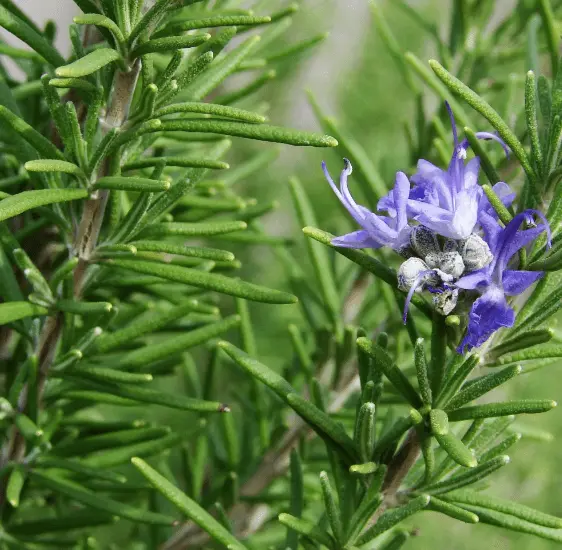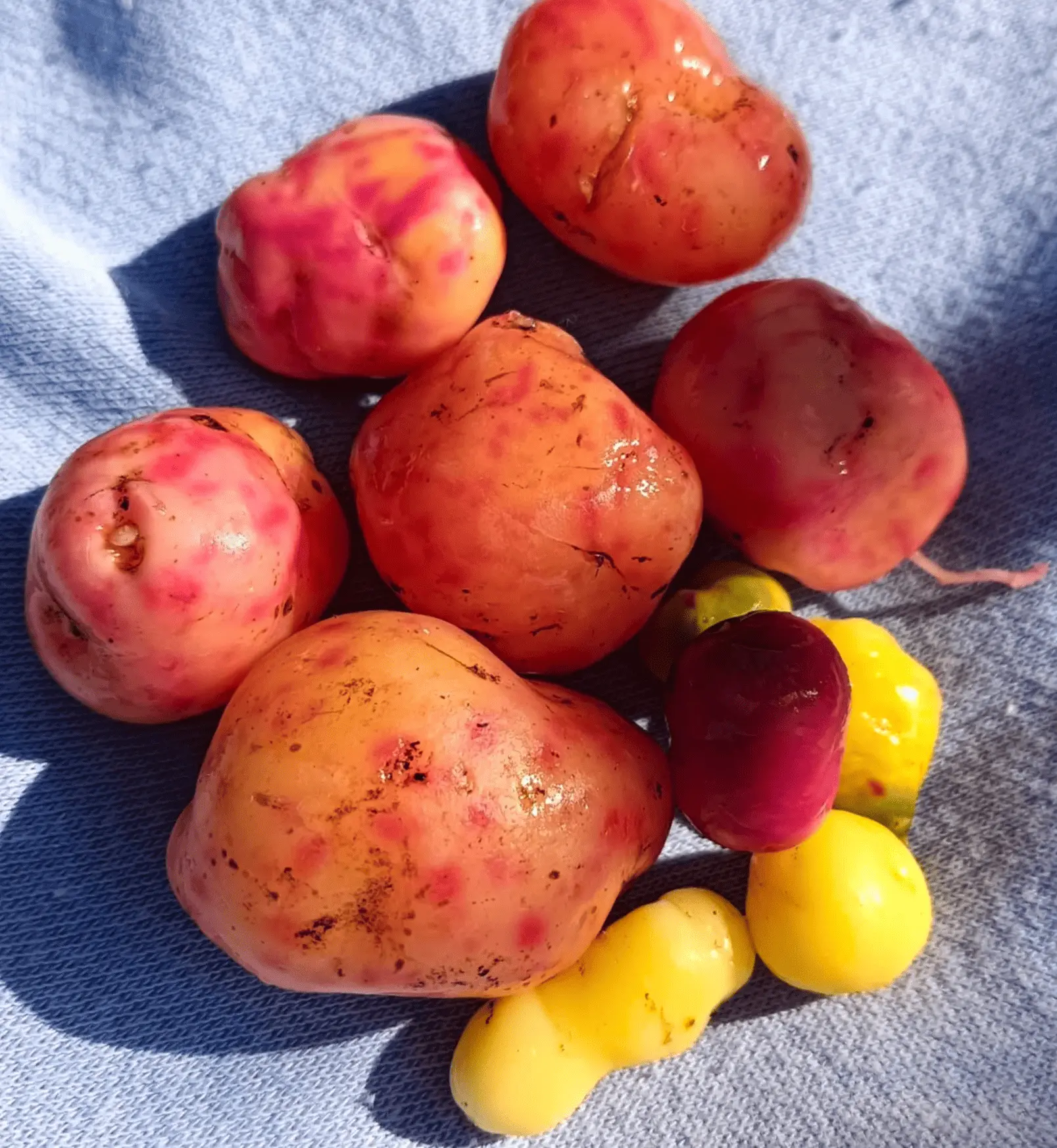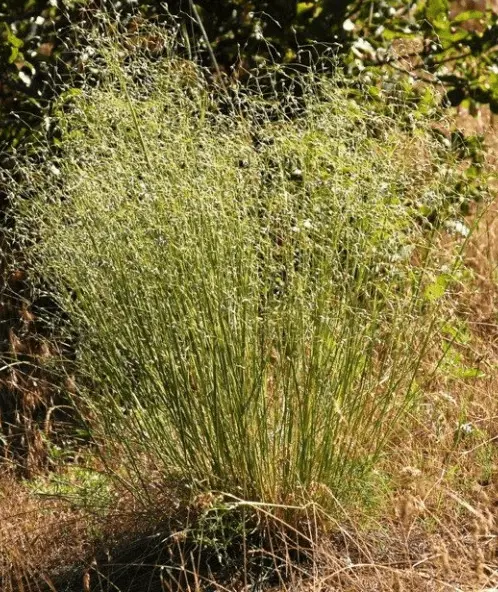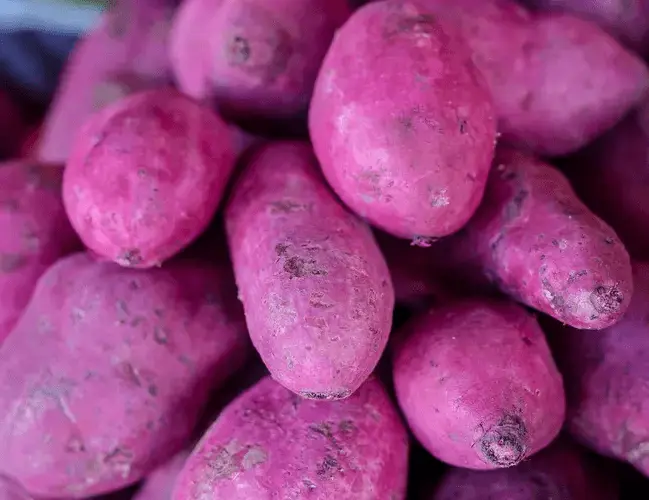
Soil Health & Fertilization
Safflower is an annual plant and one of the earliest crops to be domesticated. This plant has been used traditionally as medicine, in the kitchen and dyeing houses. Its versatility makes it a useful plant for garden, farm and commercial production.
Published on September 25, 2025

Upright Rosemary
Upright Rosemary (Rosmarinus officinalis) is one of the most popular and useful herbs in the world. This hardy species is appreciated for its aromatic leaves and stately growth, as well as in the kitchen, garden, and for its medicinal properties.

Ulluco
Ulluco is a vibrant root crop. The plant has small but vibrantly colored tubers — they can be yellow, red, pink, green, orange, or even a mix of colors (which means it’s one of the most colorful root crops in the world).

Upland Ricegrass
Upland Ricegrass is a tough and adaptable grass found growing primarily in drylands and uplands, fighting it out with the less palatable plants. It is highly valued as a grain food both for people and for animals in areas with few other crops.

Yam
Yams are starchy roots that are cultivated as a food plant throughout the world by farmers. Yams are enjoyed worldwide as a source of nutrients and a cooking staple, and they belong to the Dioscoreaceae family.
Safflower has been grown for centuries for its useful products, including medicinal, culinary, and industrial. It is also used historically as a dye, although production today is more heavily focused on seed oil and food products. The herb is also highly regarded for soil enhancement and pollinator support. The adaptability of Safflower has made it one of the must-grow crops in ancient and modern farming.
In certain countries, safflower flowers were used for achieving the same effect in dyeing and in cooking with the onset of the Common Era. The seeds were crushed for oil that was used in cooking, cosmetics, and lamps. In some traditions, its bright flowers represented warmth and wellness. To this day, safflower continues to be valued in the Asian ethnic diet and folk medicine.
Safflower is notable for its drought-resistance and its ability to flourish in poor soils. It has more oil content in polyunsaturated fats than many other oilseeds. Flowers are also decorative and have dyeing qualities, which is unlike most oil crops. It also serves as an insect attractant, beneficial to ecology.
Safflower oil is among the heart-healthy oils because of its abundant amounts of polyunsaturated fatty acids. Safflower flowers made a cheaper yellow substitute to saffron in culinary use.
Safflower is tough, fast-maturing, and heat-resistant. It has highly floriferous and seedy plants. The plant's growing season lasts quite a while, and it needs little attention once established. It is commonly applied to crop rotation to maintain healthy soil. It is an ornamental flower and a cash crop.
Safflower seeds are pressed to produce a vegetable oil used for cooking. The petals are used as natural colorants, teas, and a substitute colorant for saffron. The plant is also used as a forage crop and birdseed. Furthermore, safflower oil is used as a raw material in some cosmetics and industrial products.
Safflower likes full sun and wants soil to be well-drained. It grows well even in dry and arid areas, better than the other crops. Also, avoid waterlogged or heavy clay soils that can damage roots. Fertilization increases yield, but is not required for survival.
Tip: Got heavy clay soil? Don’t worry — you can still grow healthy plants by following these steps in our guide: How to improve the clay soil in your garden
Safflower is generally pest-resistant, but aphids and caterpillars can occasionally attack flowers. Birds may feed on seeds, reducing yield. Fungal diseases such as root rot can occur in poorly drained soil. Maintaining spacing and proper irrigation reduces risks.
The safflower seed is a small, ovoid-shaped seed, off-white to brown in color. They come inside a flimsy shell. Seed contains a high amount of oils (30–50%) in general, variety dependent. Every flower head makes dozens of seeds, which makes it one of the highest-yielding crops.
Safflower seeds will sprout in warm soil at a temperature of anywhere from 70 to 85 degrees (21 to 19° C). Soil should be moderately moist, not too wet. Seeds typically germinate in 7–14 days. Strong germination leads to hardy seedlings capable of flourishing in dry or drought-prone environments.
Seeds are viable for 2-3 years under cool, dry conditions. Healthy seeds result in vigorous seedlings and healthy plants. Good storage helps to prevent mold growth and reduces loss of germination capacity.
Safflower is sown in the open field. Sow seed 1-2 inches deep, 6-12 inches apart. It is good to space the rows 18 to 24 inches apart for perfect development. After they are established, plants need very little care other than occasional watering.
Plant safflower in full sun in well-drained soil. Don’t plant in heavy clay or areas prone to waterlogging. Thin seedlings if crowded. Mulching also retains soil moisture and suppresses weeds. Monitor for pests during flowering.
The safflower has been largely recognized as resistant to many diseases, flourishing under dry growing conditions. Too much water can lead to root rot and fungal issues. Regular checks can minimize pest damage. It would mitigate the risk of crop diseases and be beneficial to soil health.
Safflower flowers between 70 and 120 days after sowing, depending on the variety. Flowers are picked for ornamental or dye use. Seeds are mature in 120–150 days and ready for harvesting. The high oil ex-action quality depends on the drying system.
Safflower seed needs to be sun-dried and packed in cool, dry conditions. Store in an airtight container to retain quality. Seeds and oil keep for years when stored properly and in flavor. Be very delicate with the flowers you’re using for dyes if you want to keep the color!
Safflower is a multipurpose drought-tolerant crop: its seeds, oil, flowers, and petals are valuable. Its simple growing profile, resistance to pests, and versatility, which enables it to thrive in warm climates, make it perfect for beginning vegetable gardeners who are growing in a region with a tropical or subtropical climate.
Safflower growing is of advantage to both commercial farmers and home garden enthusiasts. It also offers culinary, industrial, and ecological benefits.
Typically 2–5 feet tall.
About 70–120 days after planting.
Yes, it is drought-tolerant.
Pressed for oil, used in birdseed, or for culinary purposes.
Yes, for dyes, decoration, and teas.

Soil Health & Fertilization

Pest Identification & Prevention

Lawn Care Tips & Maintenance

Soil Health & Fertilization

Smart Irrigation Systems

Patios, Walkways & Driveways

Soil Health & Fertilization

Pest Identification & Prevention